A good kitchen interior isn’t just about how it looks. It should be easy to use, comfortable, and match your style. Whether you’re changing the whole kitchen or just a few things, the right design choices can make cooking more fun and your kitchen more welcoming.
1. Picking the Best Kitchen Layout
The layout is the base of a good kitchen. Some common layouts are:
- U-Shaped: Great for big kitchens with lots of counter space and storage.
- L-Shaped: Works well in open areas, making it easy to move between cooking and eating.
- Galley: Fits small spaces with two counters facing each other for easy cooking.
- Island Kitchen: Adds extra workspace and seating, perfect for cooking and chatting with guests.
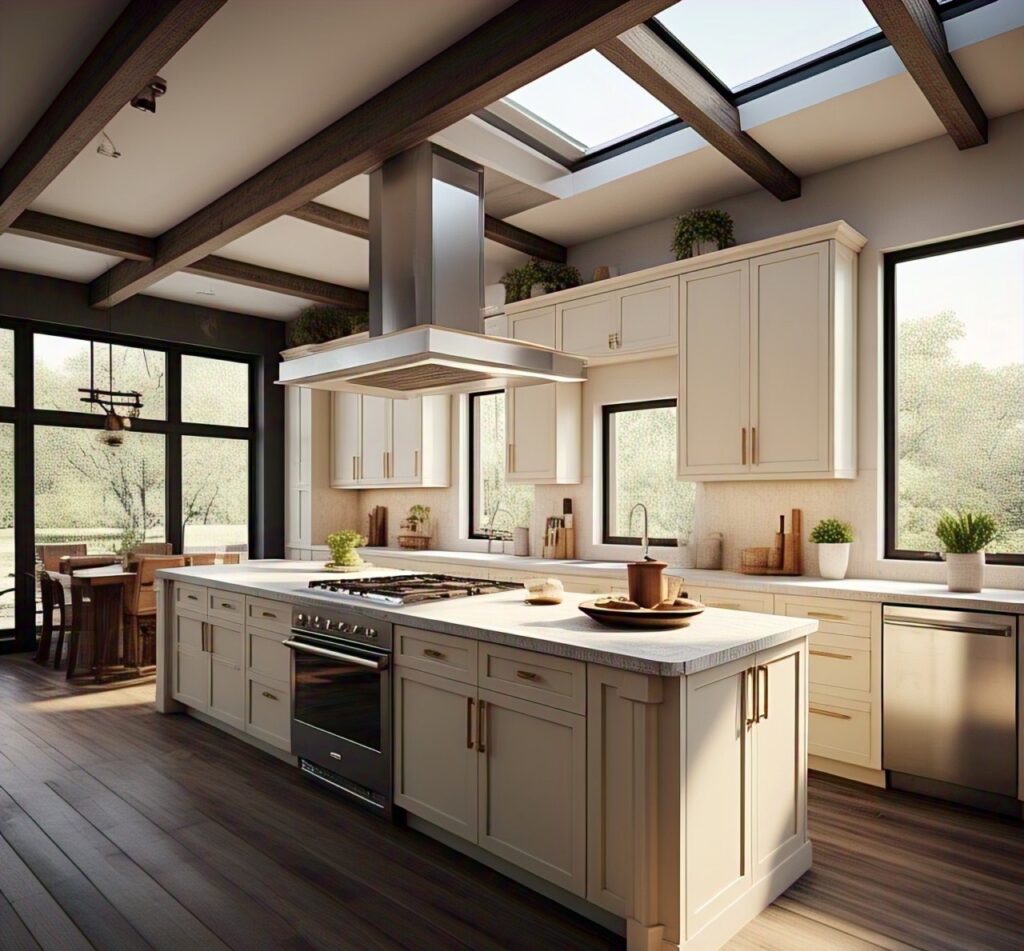
2. Choosing Colors That Feel Right
Colors change the mood of your kitchen:
- Bright and Airy: White and light colors make the space feel bigger and cleaner.
- Warm and Cozy: Soft browns, greens, and beige create a warm feeling.
- Bold and Fun: Reds, yellows, or blues bring energy and fun to the room.
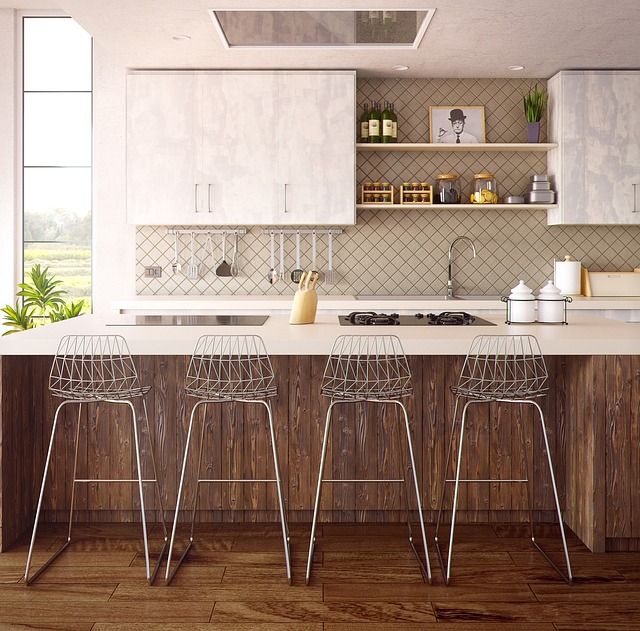
3. Picking Practical and Stylish Cabinets
Cabinets store things and add style. Think about:
- Material and Look: Wood for a classic look, laminates for easy cleaning, or glass doors for a modern feel.
- Smart Storage: Pull-out shelves, corner shelves, and drawer organizers save space.
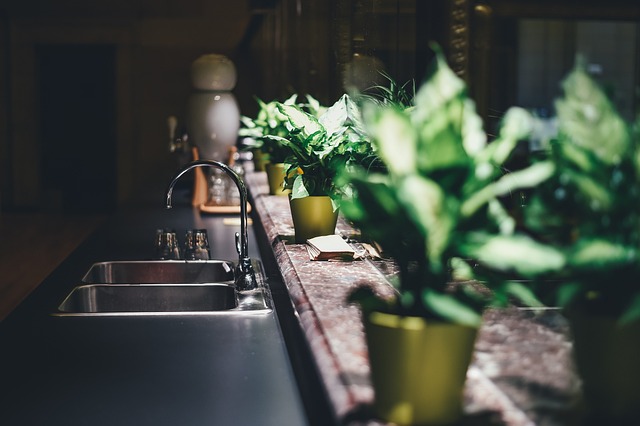
4. Choosing Countertops and Backsplashes
- Countertops: Pick strong, easy-to-clean materials like quartz, granite, or stainless steel.
- Backsplashes: Protect walls from spills and add style. Tiles, glass, and stainless steel are great choices.
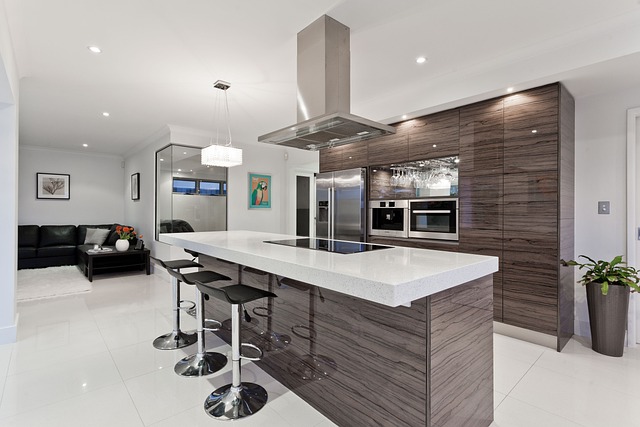
5. Using the Right Lighting
Good lighting makes the kitchen safe and cozy:
- General Lighting: Ceiling lights or recessed lights to brighten the whole room.
- Task Lighting: Lights under cabinets or above the stove and sink for clear visibility while working.
- Accent Lighting: Pendant lights or LED strips to highlight special areas or decor.
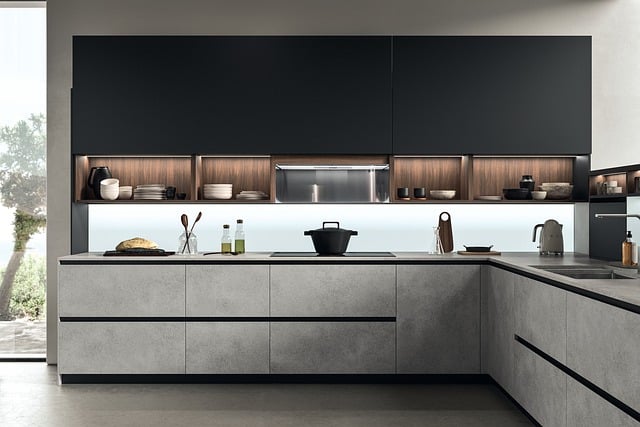
6. Choosing Durable and Stylish Flooring
Kitchen floors need to handle spills and lots of walking. Popular choices are:
- Tile: Strong and water-resistant, with many designs to pick from.
- Vinyl: Cheap, easy to clean, and soft to walk on.
- Hardwood: Looks warm and elegant but needs care to stay safe from water.
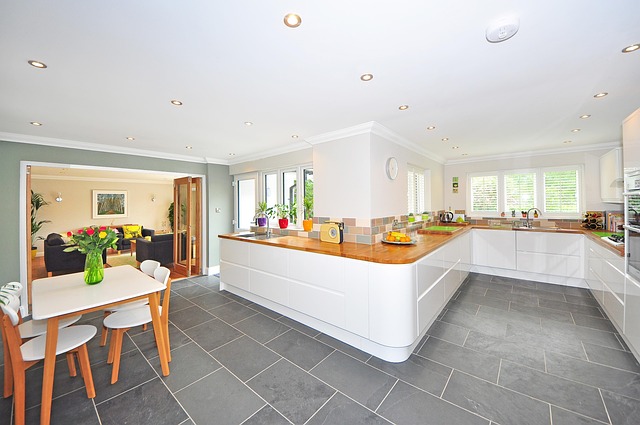
7. Adding Personal Touches
Make the kitchen your own by adding:
- Decor and Accessories: Plants, rugs, or wall art to show your style.
- Useful Details: Stylish faucets, handles, and kitchen tools to complete the look.
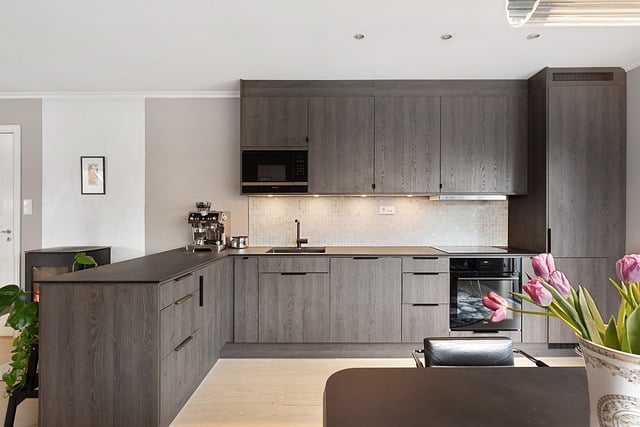
8. Notable Interior Designers
- Godrej Interio
- HomeLane
- Livspace
- Regalo Kitchens
- HouseCraft
- Livspace
- Regalo Kitchens
- HouseCraft
Here are 50 important points to keep in mind when designing a kitchen interior
1. Layout & Space Planning
- Plan a work triangle between the sink, stove, and fridge for efficiency.
- Ensure there is enough walking space (at least 3-4 feet between counters).
- Keep frequently used items within easy reach.
- Place the sink near a window for natural light and ventilation.
- Avoid placing the stove next to the fridge to prevent heat transfer.
- If possible, have an island for extra counter space and storage.
- Allow enough counter space near the stove for meal prep.
- Use corner storage solutions like pull-out racks for better space use.
- Ensure easy movement between the kitchen and dining area.
- Keep trash and recycling bins hidden but easily accessible.
2. Storage & Organization
- Install deep drawers for pots and pans instead of cabinets.
- Use pull-out shelves in lower cabinets for better access.
- Have separate spice racks near the cooking area.
- Use vertical storage to maximize space.
- Install a pantry cabinet for dry storage if space allows.
- Have a dedicated cutlery and utensil drawer.
- Use drawer dividers to keep things organized.
- Add hooks for hanging mugs, ladles, or kitchen tools.
- Consider open shelves for frequently used items.
- Keep a separate cabinet for small appliances to avoid clutter.
3. Lighting & Ventilation
- Use bright, layered lighting for a well-lit kitchen.
- Install under-cabinet lights for better countertop visibility.
- Choose warm LED lights for a cozy feel.
- Have a chimney or exhaust fan to remove cooking fumes.
- Ensure proper cross-ventilation with windows or vents.
4. Countertops & Materials
- Choose a durable, heat-resistant countertop like granite or quartz.
- Use waterproof and stain-resistant materials for easy cleaning.
- Avoid glossy countertops that show stains easily.
- Pick scratch-resistant and easy-to-maintain surfaces.
- Have a backsplash to protect walls from cooking splashes.
5. Flooring & Walls
- Use non-slip flooring to prevent accidents.
- Pick water-resistant and easy-to-clean tiles or materials.
- Avoid white floors as they show dirt quickly.
- Use washable wall paints to handle kitchen stains.
- Consider adding decorative tiles for a stylish touch.
6. Appliances & Electrical Planning
- Plan for ample electrical outlets for appliances.
- Keep outlets near the countertop for easy access.
- Choose energy-efficient appliances to save power.
- Have a built-in microwave or oven for a sleek look.
- Ensure the fridge has enough ventilation space around it.
7. Safety & Functionality
- Use soft-close cabinets and drawers to prevent injuries.
- Install child safety locks if you have kids.
- Avoid sharp-edged counters to prevent accidents.
- Keep a fire extinguisher in an accessible place.
- Ensure the kitchen has a smoke detector.
8. Aesthetics & Personal Touch
- Choose a color scheme that matches your style.
- Add plants or small decor items for a fresh look.
- Use glass cabinets to showcase beautiful crockery.
- Add a breakfast bar if space allows.
- Keep the design minimal and clutter-free for a modern feel.
Also Read: Home Interior
Note: If you want to learn more about Money and Finance. Do Follow my YouTube channel TheMoneyMindset.